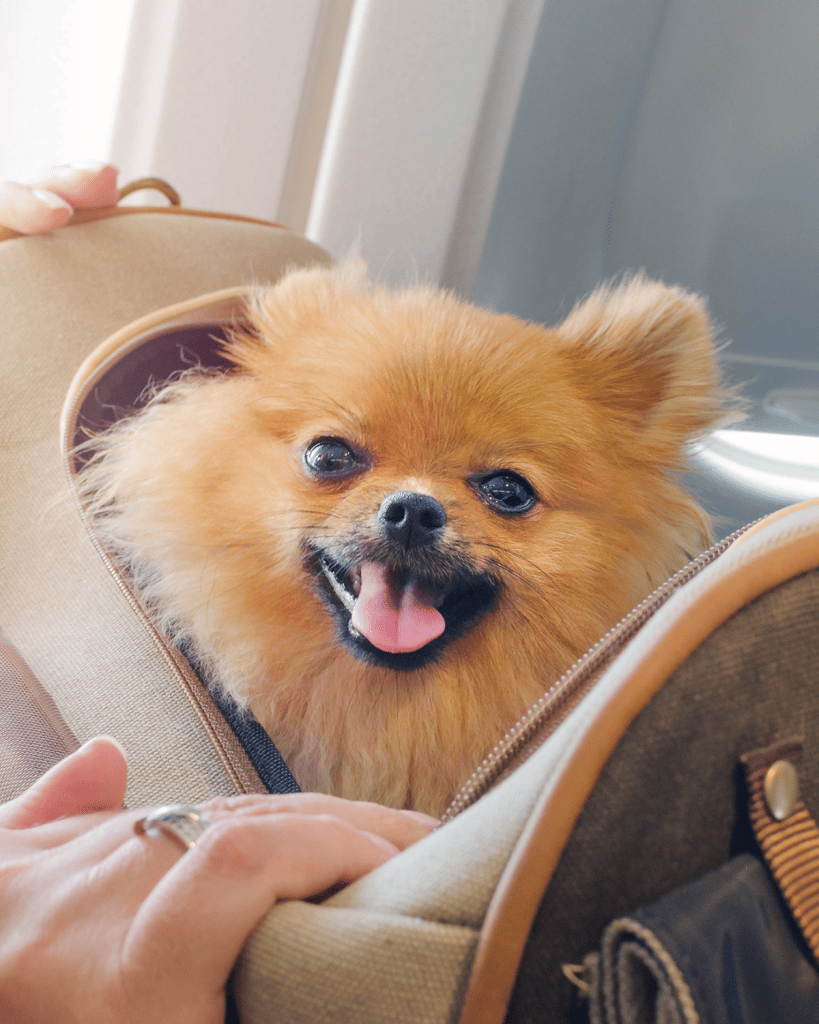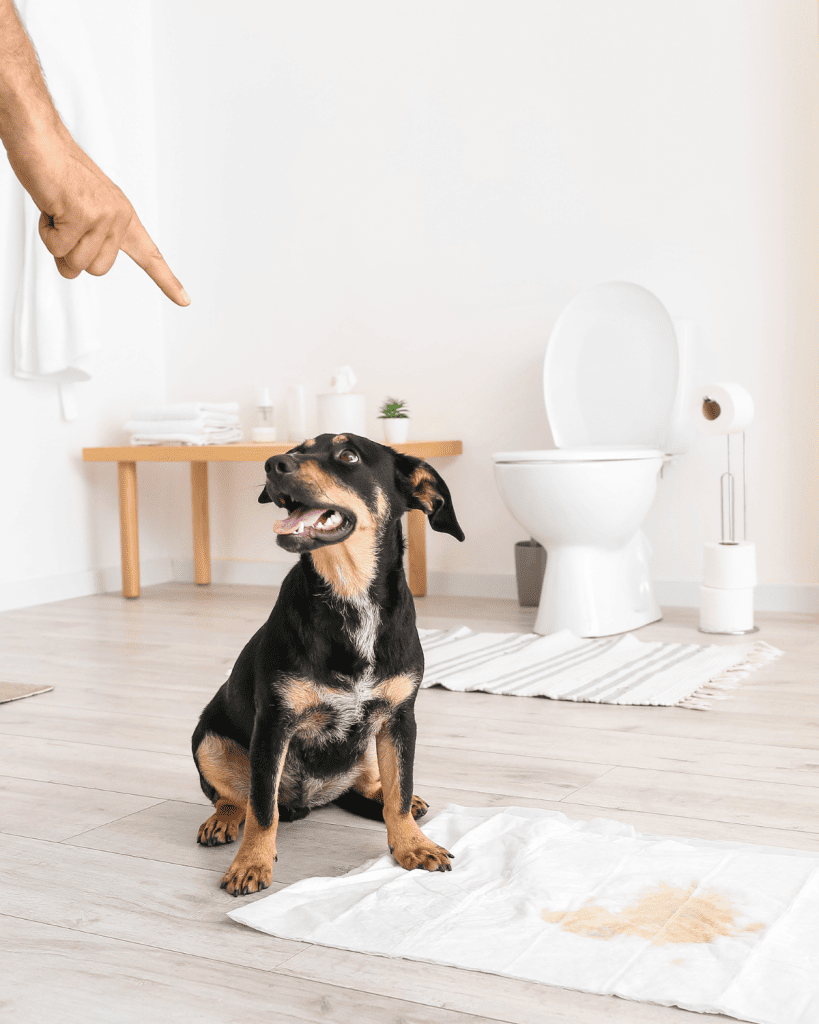How Much Sleep Do Puppies Really Need?
Sleep is critical for puppies, but how much sleep do they need?
Welcoming a new puppy into your home is an adventure filled with joy, learning, and a few sleepless nights. For new puppy parents, understanding the sleep needs of your furry addition is one of the most important things to grasp to ensure their health and happiness. Much like young puppies and even human babies, getting enough sleep is crucial for their development. Puppies experience rapid growth, not just physically but mentally too. During sleep, particularly during phases of REM sleep, puppies’ central nervous systems, immune systems, and brains develop and strengthen.
The average sleep needs of puppies can seem astonishingly high. Young pups can snooze for about 18-20 hours a day! This isn’t continuous; it includes frequent naps and some longer periods of rest during the night. As they grow older, the amount of sleep gradually decreases, but even then, puppies and young dogs need a lot more rest compared to adult dogs. New experiences, learning potty training, adapting to a new home, and even playing expend a lot of energy and can lead to a lot of sleep to recharge. Understanding and accommodating your puppy’s sleep schedule is crucial for their well-being and your journey together towards creating good sleeping habits and a happy, healthy dog.
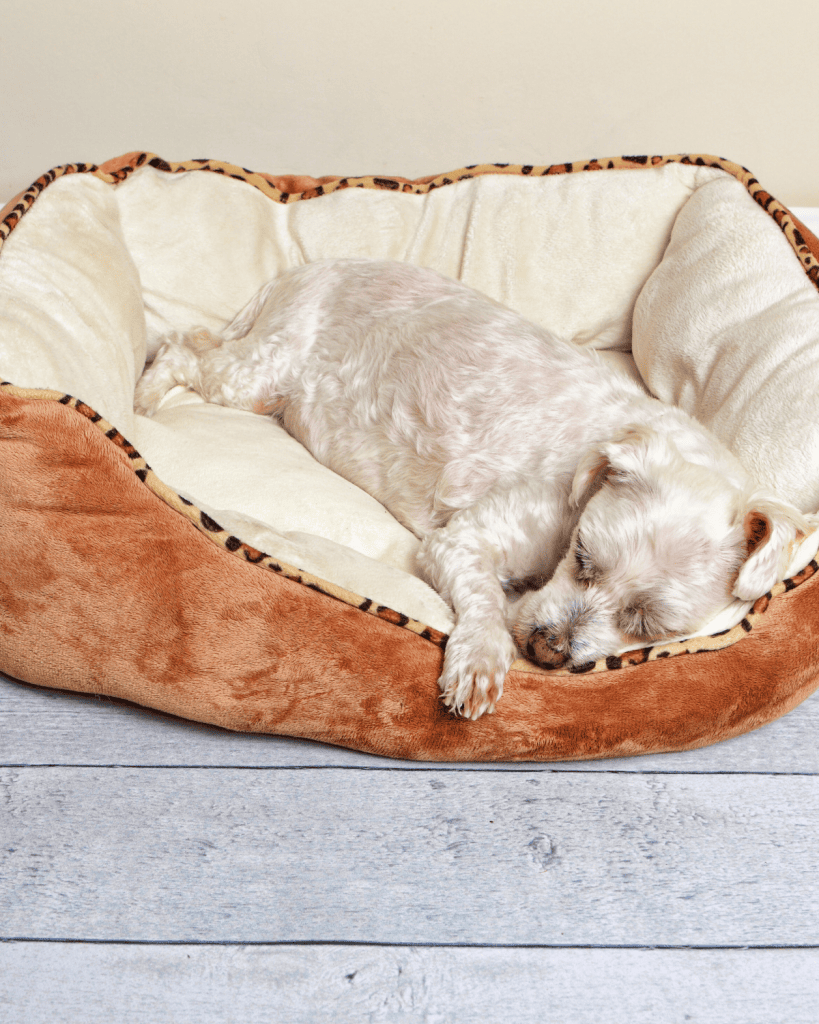
Why Do Puppies Need So Much Sleep?
Bringing a new puppy home can feel like a whirlwind of activity marked by bursts of playful energy followed by long hours of sleep. If you find yourself wondering why your young pup spends so much time in the land of nod, especially when compared to older dogs, there’s a good reason for this.
Comparison with Adult Dogs
Adult dogs often adapt to the daily routine of their human families, requiring less sleep overall. Their systems are fully developed, and their need for sleep, while still significant, is not as critical as that of growing puppies. Older dogs might settle for a cozy bed in a quiet place for naps throughout the day and then sleep through the night alongside their pet parents, but they’ll typically be awake for longer periods than their younger counterparts.
In contrast, how much sleep do puppies need is driven by their rapid development and steep learning curve in this world. They are like sponges, soaking up new information and experiences, from learning where to take a potty break to getting used to a new home. All this learning and growing requires a tremendous amount of energy which is why puppies need a lot of sleep.
Sleep and Puppy Development Stages
Puppies undergo significant physical and mental development during their first months of life. From the very newborn puppies needing perhaps as much as 18-20 hours of sleep, to active puppies around a few months of age who still require plenty of sleep to support their growth spurts and central nervous system development. This period is critical for developing a robust immune system, solidifying a good sleep schedule, and ensuring optimal mental stimulation that will shape their adult behavior.
During these stages, sleep is not just about rest. It’s when a puppy’s brain processes the day’s learning. REM sleep, in particular, plays a role in mental development, allowing puppies to consolidate and store all the new experiences they’ve been exposed to, from meeting new people to mastering the art of potty training. Rapid growth requires a great deal of energy, so it’s no surprise that after a toy-filled awake time or a toilet break, your puppy will likely seek the comfort of a soft bed for another round of sleep.
Puppies live by a cycle of play, eat, and sleep. Their sleeping patterns are interwoven with their daily adventures and are as essential as the food they eat and the love they receive. Pet parents quickly learn that ample sleep times, a consistent routine, and providing a comfortable sleeping environment are the keys to a happy and thriving pup. A puppy’s sleep schedule isn’t just about getting through the night, it’s a fundamental building block of their health and future well-being.
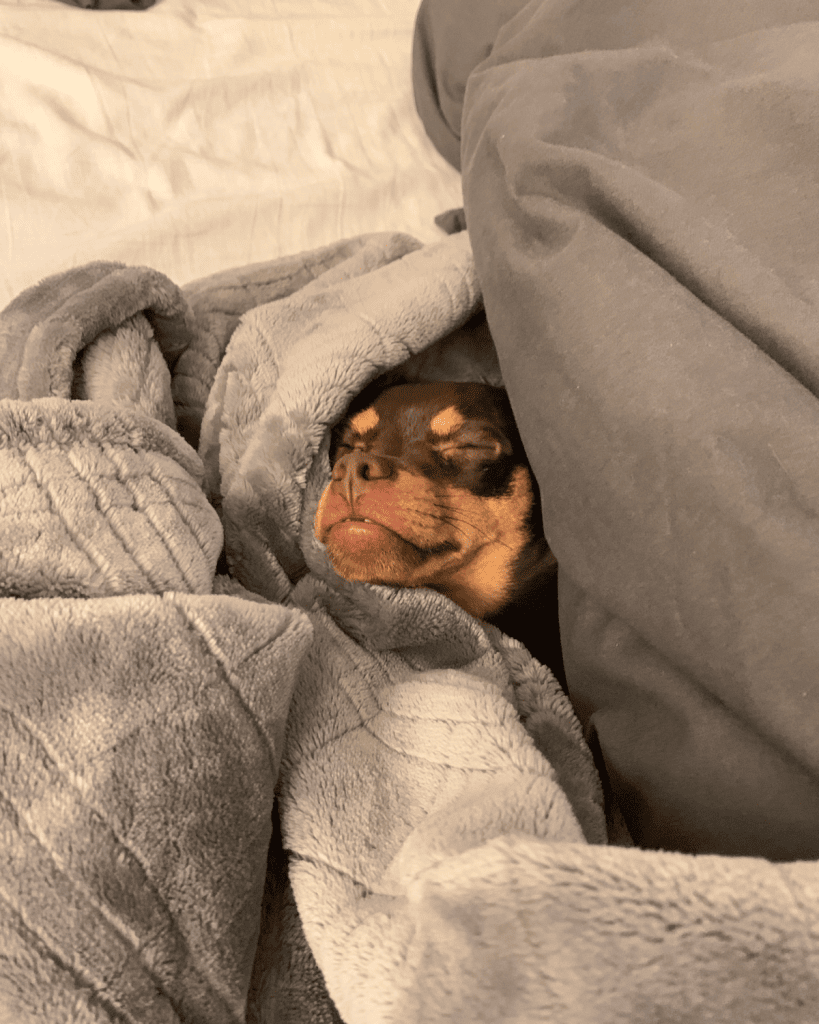
How Much Sleep Does Your Puppy Need By Age?
As pet parents gaze at their puppies curled up in a dog bed or a crate, it’s common to ponder how much sleep their little companions actually need. Puppy sleep requirements vary greatly from the time they’re born up until they reach adulthood. Let’s break down these sleep needs by age:
0 – 6 Months
From the moment young puppies open their eyes until they reach six months of age, they’re in a phase of rapid growth and development. Newborn puppies may spend about 18-20 hours per day asleep. This may seem like a lot of sleep but considering their active growth and the ample energy exerted during awake time, it’s quite necessary.
During these early weeks of age, sleep dominates a puppy’s schedule. Puppies typically sleep in spurts – waking up for a short period to eat and for necessary potty breaks before dozing off again. Puppy owners should expect frequent naps throughout the day and some activity during the middle of the night. Establishing a good sleep schedule and starting with crate training can help manage these sleep times and ensure your puppy gets enough rest.
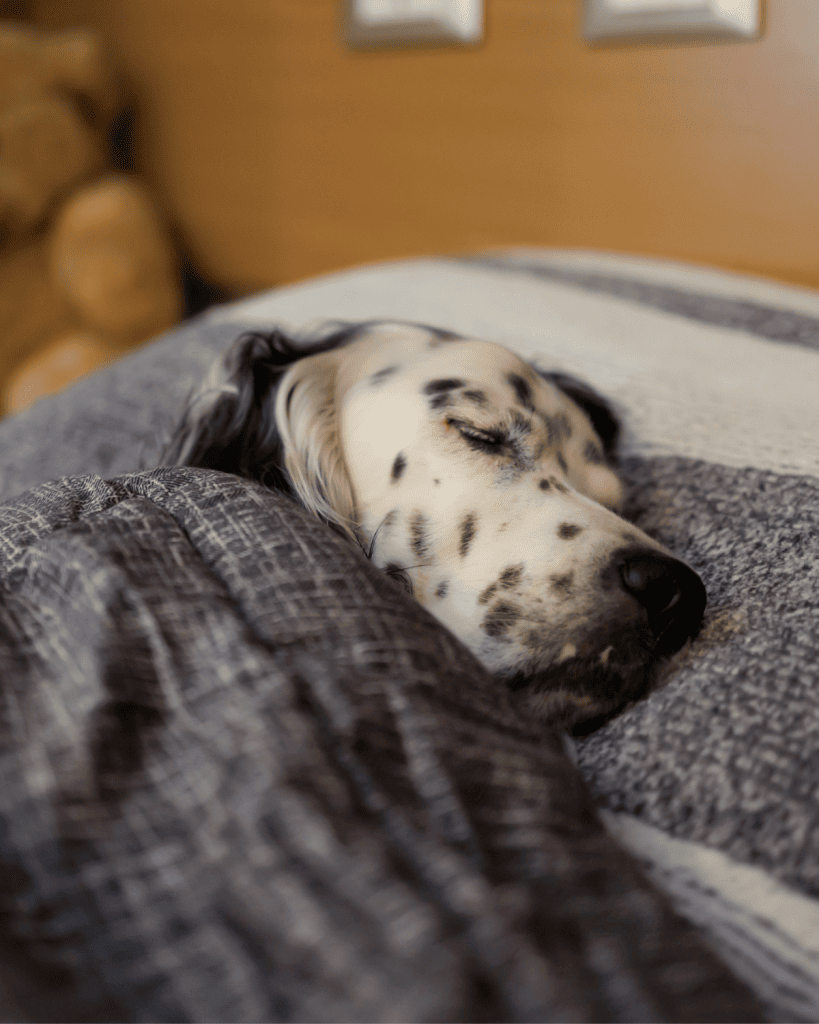
7 – 12 months
As puppies enter the second half of their first year, from seven to twelve months old, they still require a good deal of sleep. Though they may now be able to stay awake for longer periods, they still need the support of about 16-18 hours of sleep to handle their still significant daily routine of activity and learning.
In this stage, as young dogs explore and learn, their immune systems continue to develop and their central nervous system matures, sleep remains a critical factor in their overall health. As activities like potty training intensify, plenty of sleep is essential for puppies to process these new experiences and for retaining new information.
Over 12 Months
Once puppies reach over twelve months of age and graduate into the young adult stage, their sleep requirement will start to align closer to those of adult dogs. However, larger breeds like Great Danes may still need a bit more rest compared to smaller breeds due to their longer growth period. At this age, a puppy’s sleep patterns stabilize, usually requiring around 14-16 hours of sleep spread over a 24-hour period.
Puppies in this age range have often found their rhythm and, with successful habit formation, should have a consistent routine. A comfortable sleeping environment continues to be critical for a good night’s sleep, and while they may now sleep through the night, daytime naps after periods of activity remain a natural part of their sleep habits. Furthermore, ensuring they get enough rest is crucial for avoiding behavioral problems and maintaining a healthy and happy dog life.
In summary, as your puppy grows, monitoring their amount of sleep, helping them stick to a consistent routine, and ensuring they have a quiet and safe place to rest are all central aspects of their care. Providing comfort, such as a cozy bed or soft toys, and understanding that sleeping patterns change as they go from a ball of energy needing frequent naps to an older dog with more predictable sleep habits, shows compassionate and informed pet parenting.
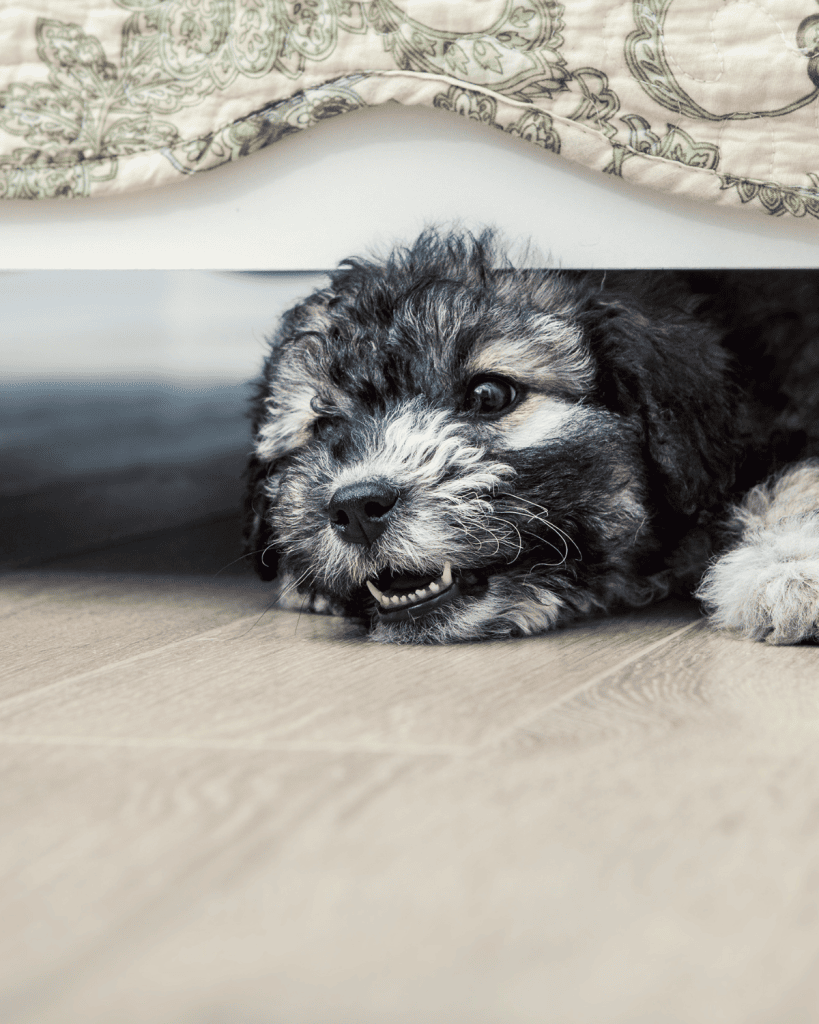
Signs That Your Puppy Is Getting Enough Sleep
Ensuring your puppy gets enough sleep is foundational for their physical health, mental development, and overall well-being. Recognizing the signs that indicate whether they’re getting the necessary amount of z’s can help pet parents ensure their furry friends grow up happy and healthy. Here are some key behavioral indicators and physical signs to look out for:
Behavioral Indicators
- Consistent Energy Levels: A well-rested puppy will exhibit consistent energy levels appropriate to their developmental stages and breed. Active puppies should be eager to engage in play and activities and then wind down when it’s nap time or bedtime.
- Good Appetite: Sleep supports metabolism. Puppies that get enough sleep have a healthy appetite. A lack of interest in food might indicate a disruption in sleep patterns or not getting enough rest.
- Calm Behavior at Bedtime: Puppies that have received ample sleep throughout the day will be more inclined to settle down calmly at bedtime. Difficulty sleeping or excessive whining at night might point to a need for more sleep during the day.
- Positive Responses to Training: A well-rested puppy can focus better during training, retain new information, and respond positively to mental stimulation. This indicates that their central nervous system is getting the rest it needs to process and retain new skills and behaviors.
Physical Signs
- Healthy Growth Patterns: Sufficient sleep promotes healthy growth and development in puppies. As they grow, you should be able to notice continuous physical development in line with the expected growth curves for their breed.
- Bright Eyes and Healthy Coat: Physical signs that a puppy is getting enough sleep include having bright, clear eyes and a healthy, shiny coat. Lack of sleep can make their eyes appear dull and lead to a less vibrant coat.
- Regular, Uninterrupted Sleep Cycles: Observing your puppy enjoying regular and uninterrupted sleep cycles, including deep sleep phases such as REM sleep where they might twitch or dream, indicates they are getting quality rest.
- Quick Recovery After Activity: Puppies who get enough sleep will recover quickly after periods of play or training. They will bounce back with renewed energy after a brief rest or a good night’s sleep.
- Overall Health: Sufficient sleep contributes to a strong immune system. Puppies that consistently get enough sleep should experience fewer minor health issues and have a robust immune response, characterized by quick recoveries when they do encounter common puppyhood ailments.
Ensuring your puppy has a comfortable sleeping environment, a consistent routine, and plenty of opportunities for both play and quiet time can support their sleep needs. Recognizing these behavioral and physical signs will help you know that your puppy is on the right track, ensuring they develop into a healthy, joyful, and well-adjusted dog.
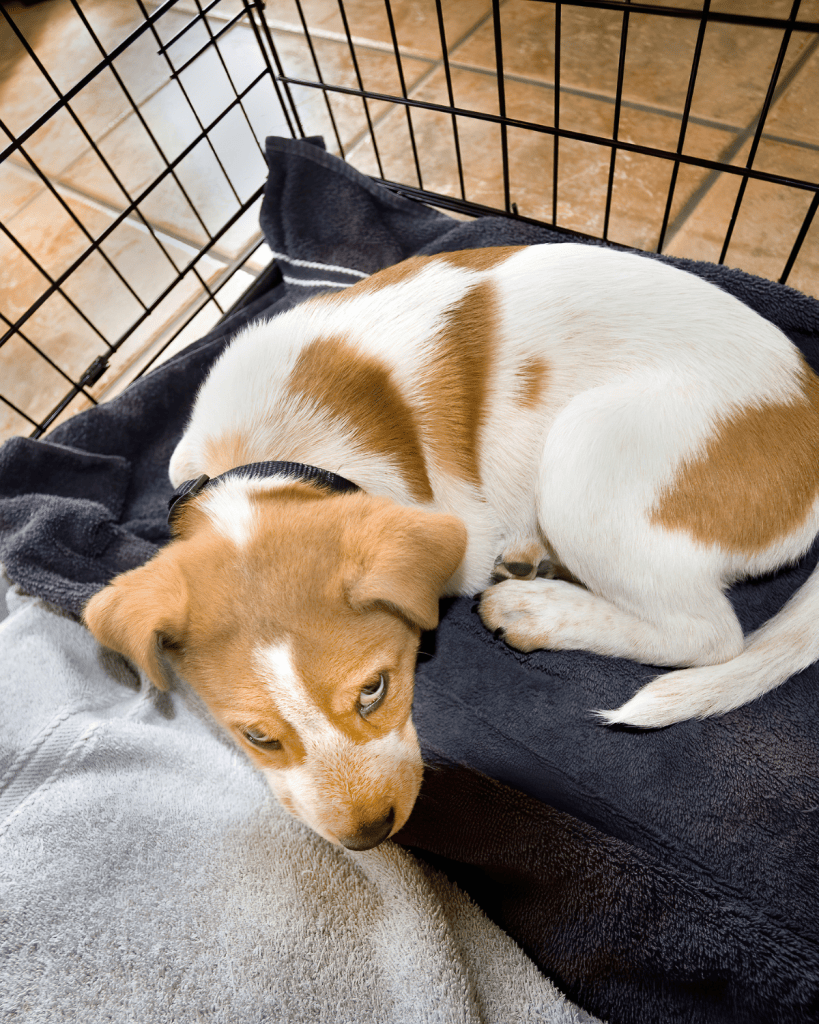
Factors That Influence Puppy Sleep Patterns
Several factors can significantly influence how much your puppy sleeps, and recognizing these factors can help you better understand and cater to your puppy’s sleep needs. Here are three primary factors that impact puppy sleep patterns:
Breed Differences
Different dog breeds have different sleep requirements, often tied to their general activity levels and physical makeup. For instance:
- Large and Giant Breeds: Breeds like Mastiffs and Saint Bernards may need more sleep because of the energy required for growth and maintaining large bodies, sometimes up to 18 hours a day as puppies.
- Working and Energetic Breeds: Border Collies, Belgian Malinois and Australian Shepherds have a lot of energy, but they also need ample sleep to recover from the mental and physical stimulation when active – so don’t fall into the high drive dog dilema!
- Brachycephalic Breeds: Breeds with short noses, such as Pugs and Bulldogs, might sleep more due to their breathing difficulties, which can make them tire more easily.
Activity Levels
The level of activity a puppy engages in during their awake time can significantly impact their sleep patterns:
- Highly Active Puppies: Puppies that play vigorously, go on walks, or engage in training will use up more energy and consequently require more rest to recover.
- Less Active Puppies: Puppies that are less active or live in a more sedentary environment may sleep more out of boredom or may need less sleep because they expend less energy.
Health and Diet
A puppy’s health and diet play crucial roles in their sleep patterns:
- Nutrition: Just as with humans, the quality of a puppy’s diet can affect their energy levels and sleep. High-quality, balanced puppy food provides the energy for play and the nutrients for growth, aiding better sleep for recovery.
- Illness: A puppy that isn’t feeling well may sleep more than usual. This can be seen in puppies who are dealing with infections, parasites, or other health issues. An increase in sleep, paired with other symptoms like lethargy or loss of appetite, should prompt a visit to the vet.
- Digestion: How easily a puppy digests their food can impact sleep. Feeding puppies too close to bedtime might disturb their sleep with digestive activity, or, conversely, a good diet can promote a full and peaceful night’s rest.
Knowing the breed characteristics, providing appropriate daily exercise, and ensuring a healthy diet can all help support optimal sleep patterns in puppies. Monitoring these factors will also assist in identifying any deviations from normal patterns that could signal health issues or the need for lifestyle adjustments.

Setting Up a Sleep Schedule For Your Puppy
Implementing a structured sleep schedule is essential for your puppy’s development, health, and behavior. Here’s how you can efficiently introduce a bedtime routine and offer sleep training tips:
Creating a Bedtime Routine
- Evening Routine: Engage in light play or a walk to tire your puppy out.
- Meal and Potty Timing: Finish meals a few hours before bedtime and take a final potty break right before sleep.
- Quiet Time: Establish a calm period before bed to help your puppy wind down.
- Consistent Bedtime: Stick to the same bedtime each night for regularity.
Sleep Training Tips
- Dedicate a Sleep Area: Identify a specific sleep spot like a crate or dog bed.
- Make it Positive: Use calm, comforting practices to make bedtime enjoyable.
- Crate Training: If using a crate, ensure it’s welcoming and only associated with positive experiences.
- Manage Daytime Naps: Adequate daytime sleep prevents overtiredness and nighttime restlessness.
- Evening Calm: Avoid energizing activities that might keep your puppy awake.
- Be Patient: Adjustment takes time and consistency.
Adapt these methods to fit your puppy’s needs, and remember, patience and consistency are key to creating a healthy sleep routine.
Common Puppy Sleep Issues
Undersleeping: If your puppy frequently appears tired, uninterested in play, or seems overly impatient, they may not be getting enough sleep. Overstimulation, a lack of comfortable sleeping space, or too much nighttime feeding can contribute to undersleeping.
Trouble Sleeping Through the Night: Puppies may struggle sleeping through the night due to their separation between you and possibly the separation from their family. They may also need a bathroom break, or get hungry. Consider a white noise, a consistent bedtime routine, or a timely feeding schedule for possible solutions.
This device works a treat – we use it all the time at home when we’re trying to capture calmness whether that’s when we’ve got big machinery going in the yard – or with fireworks – and it works awesomely with puppies too.
This is my favourite bed, and very much a long lasting phenomenal investment. They also do crate pads!
If you are struggling getting puppy to settle, something like this heartbeat toy can really help them settle in their new environment and not feel so lonely.
Identifying a Problem: Spotting sleep issues involves noticing changes in behavior or energy levels. Frequent night waking, inexplicable anxiety, excessive energy at night, or lethargy during the day can indicate problems. Consult with your vet if symptoms persist or if any drastic behavioral changes occur.
FAQ: Puppy Sleep Schedule and Common Issues
Q: How many hours should my puppy sleep in a day?
A: Puppies typically need between 18-20 hours of sleep per day, depending on their breed and age.
Q: Is it normal for my puppy to wake up in the middle of the night?
A: Yes, it’s fairly common for young puppies to wake up during the night due to the need for bathroom breaks or because they haven’t yet settled into a routine.
Q: What can I do if my puppy is undersleeping?
A: Ensure they have a quiet, comfortable sleep environment and a consistent routine. If undersleeping continues, consult a vet to rule out any health issues.
Q: How can I help my puppy sleep through the night?
A: Implement a bedtime routine, limit water intake before bed, provide a comfortable bed, and set up a consistent schedule for bedtime and bathroom breaks.
Q: When should I be concerned about my puppy’s sleep?
A: Consult your vet if your puppy is sleeping significantly less than the average for their age and breed, if there’s a sudden change in sleep patterns, or if you notice signs of distress or illness.
Conclusion
Understanding your puppy’s sleep patterns and potential issues is an essential part of pet parenting. With patience, consistency, and the right tools, you can ensure that your furry friend has a healthy sleep routine.
To assist you on this journey, consider investing in the Rebarkable Puppy Bundle. This all-in-one toolkit is designed to support you and your puppy during this vital stage of their life. The bundle is centered around positive reinforcement, serving to make all aspects of puppy parenting—sleep included—as enjoyable and effective as possible.
Don’t hesitate, transform your puppy parenting journey and enhance your pet’s sleep routine today with the Rebarkable Puppy Bundle. Your little furry friend will thank you!

Author, Ali Smith
Ali Smith is a professional, qualified, and multi-award winning trainer is the founder of rebarkable. She has always believed animals deserve kindness and champions force free methods. Believing that dog guardians will all choose the kindest options if proper information is provided, she aims to help all dog guardians who need it and make dog training as accessible as possible
Ali lives win Maryland, US with her husband and her three dogs.



